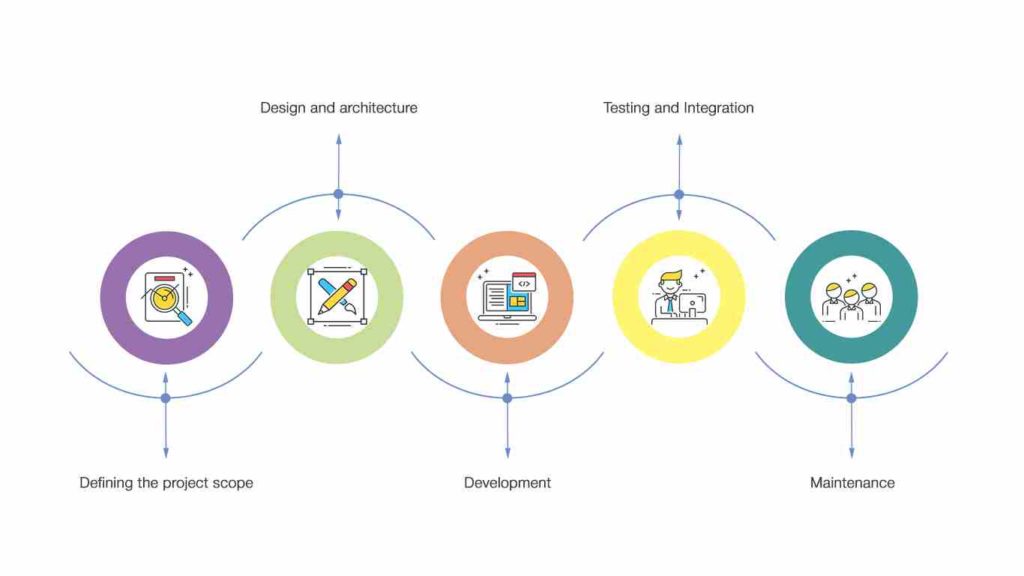What is software development life cycle?
The article is a part of Code Inspiration’s software development outsourcing Knowledge Base.
SDLC, or a software development life cycle helps us to understand what are the software development stages, which is their consequences, what hides behind of them, etc.
Let us introduce you the very typical SDLC model: Let’s see each stage within the software development life cycle.
Let’s see each stage within the software development life cycle.
Phases are considered and described separately.
- Defining the project scope
The software development life cycle begins with this analytical stage. During it, the process participants discuss requirements for the final product. The purpose of this stage is to define detailed system requirements. In addition, it is necessary to make sure that all participants have a clear understanding of what are the tasks and how exactly each requirement will be implemented in practice.
On the whole, the stage is aimed at gathering all the requirements to the software, their systematization, analysis, and also the identification and resolution of contradictions.
- Design and architecture
Guided by the requirements, developers and system architects develop a high-level system design at this stage. A variety of technical issues arising in the design process are discussed with all interested parties, including the customer. The technologies to be used in the project, team loading, limitations, time frame and budget are determined. In accordance with the updated requirements, the most suitable design solutions are selected. As a rule, DSD or Design Specification Document is the resulting document of this stage. In our company, the stage is always followed by layouts, a prototype of a site drawn for example in Photoshop.
- Development
Once the product design is chosen and concrete requirements are decided on, the team can make a step forward and start the development as it is. On this spot, the developers start the actual coding process according to the accepted requirements. Here, the project manager is also involved, choosing an appropriate development approach. In general, the development algorithm includes such stages as development of algorithms, source code writing, conversion to the machine code or in other words compilation, followed by testing and debugging activities.
- Testing and Integration
The testing stage is of great importance both for the developers and the client, as it helps to reveal if the developed product is of the expected quality.
The SDLC stage is aimed at checking the newly developed software for some errors or bugs made during the development process. QA engineers not indicate some undesired bugs, but also compare the behavior of the system described in the requirements with the real one.
Once the defect is detected, the tester compiles an error report, which is then passed to the programming team. The developers report bug fixing, and after this, the testing activity repeats. This time, the purpose of testing is different: to make sure the problem is corrected, and bug fixing itself did not cause new defects in the product.
Testing makes it possible to understand if the new software:
- matches the identified requirements and client’s business goals;
- possesses enough reliability;
- all the functional requirements taken into account and the product has appropriate functionality.
- Maintenance
If the team has finished the testing phase, and that means it’s time to deploy the software product and release it. After this, maintenance service is offered to the customer. It is required, because the market won’t stand still and for sure your software solution would require time-to-time updates and customization for new software devices.
The key maintenance aim is to provide remaining relevancy and customers’ expectations fit.
The article is a part of Code Inspiration’s software development outsourcing Knowledge Base.
